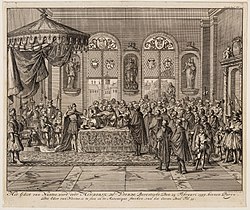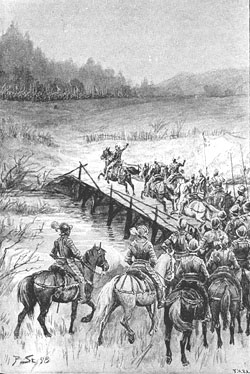| Years |
|---|
| Millennium |
| 2nd millennium |
| Centuries |
| Decades |
| Years |



| 1598 by topic |
|---|
| Arts and science |
| Leaders |
| Birth and death categories |
| Births – Deaths |
| Establishments and disestablishments categories |
| Establishments – Disestablishments |
| Works category |
1598 (MDXCVIII) was a common year starting on Thursday of the Gregorian calendar and a common year starting on Sunday of the Julian calendar, the 1598th year of the Common Era (CE) and Anno Domini (AD) designations, the 598th year of the 2nd millennium, the 98th year of the 16th century, and the 9th year of the 1590s decade. As of the start of 1598, the Gregorian calendar was 10days ahead of the Julian calendar, which remained in localized use until 1923.




